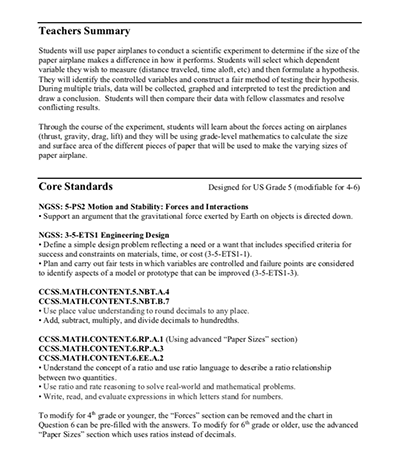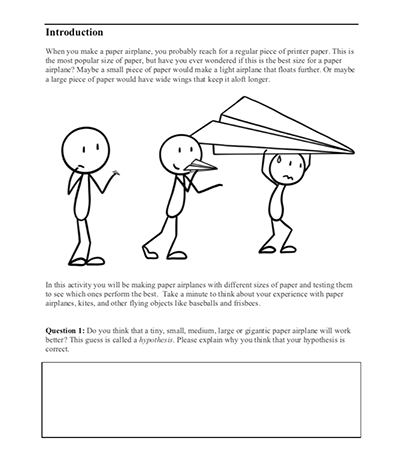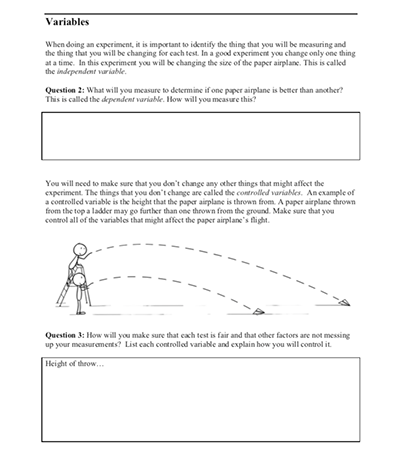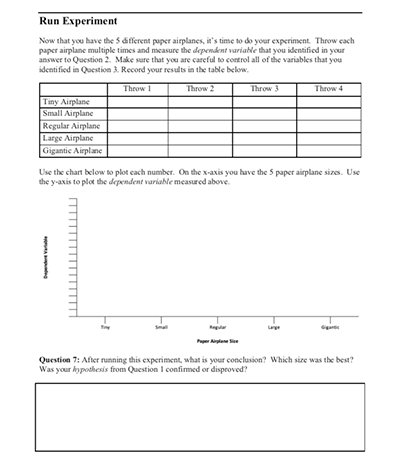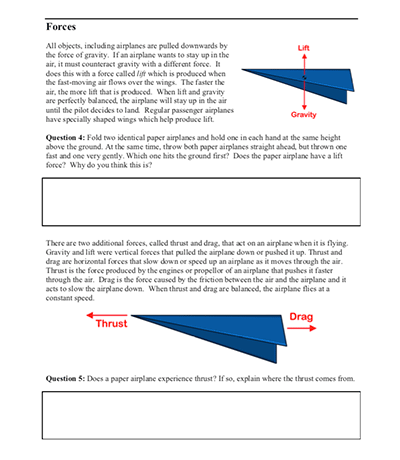Paper Airplane Lesson Plans for Teachers
Use our pre-made lesson plans and classroom activities to teach math and science concepts. Each lesson plan includes a teacher's packet and a student handout that has everything you need.
Many educators use paper airplanes in the classroom to teach a variety of science concepts. Paper airplanes are a fun way to learn about aerodynamics, physics, experimentation, mathematics and other topics. One of our goals is to provide resources to make it easier for educators to teach certain concepts. Below, you will find a pre-made lesson plan that we created. We hope to create more in the future, so please bookmark this page.
If you download and use this lesson plan or if you have a paper airplane lesson that you already use, please get in touch with us and give us some feedback. We are very interested to hear about your experiences.

Experiment with Different Sizes of Paper Airplanes
Designed for 4th-6th Grade

Students will use paper airplanes to conduct a scientific experiment to determine if the size of the paper airplane makes a difference in how it performs. Students will select which dependent variable they wish to measure (distance traveled, time aloft, etc) and then formulate a hypothesis. They will identify the controlled variables and construct a fair method of testing their hypothesis. During multiple trials, data will be collected, graphed and interpreted to test their prediction and draw a conclusion. Students will then compare their data with fellow classmates and resolve conflicting results.
Through the experiment, students will learn about the forces acting on airplanes (thrust, gravity, drag, lift) and they will be using grade-level mathematics to calculate the size and surface area of the different pieces of paper that will be used to make the varying sizes of paper airplane.
Math and Science Standards
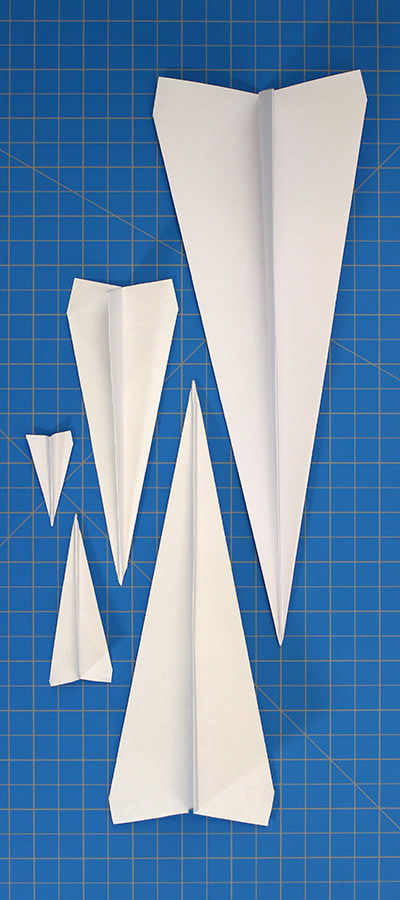
This classroom activity is aligned to the Next Generation Science Standards (NGSS) and Common Core State Standards (CCSS). The activity can easily accommodate grades 4-6 and the teacher's packet includes instructions for how to scale it up or down as necessary.
NGSS: 5-PS2 Motion and Stability: Forces and Interactions (link)Support an argument that the gravitational force exerted by Earth on objects is directed down
NGSS: 3-5-ETS1 Engineering Design (link)Define a simple design problem reflecting a need or a want that includes specified criteria for success and constraints on materials, time, or cost. Plan and carry out fair tests in which variables are controlled and failure points are considered to identify aspects of a model or prototype that can be improved.
CCSS.MATH.CONTENT.5.NBT.A.4, CCSS.MATH.CONTENT.5.NBT.B.7 (link)Use place value understanding to round decimals to any place. Add, subtract, multiply, and divide decimals to hundredths.
CCSS.MATH.CONTENT.6.RP.A.1, CCSS.MATH.CONTENT.6.RP.A.3 (link)Understand the concept of a ratio and use ratio language to describe a ratio relationship between two quantities. Use ratio and rate reasoning to solve real-world and mathematical problems.
CCSS.MATH.CONTENT.6.EE.A.2 (link)Write, read, and evaluate expressions in which letters stand for numbers.
Download
We have prepared everything that you need and put it all into a convenient 12 page PDF document. If you have a Pilot's License, you can easily download and print the teacher's packet and student handouts.
